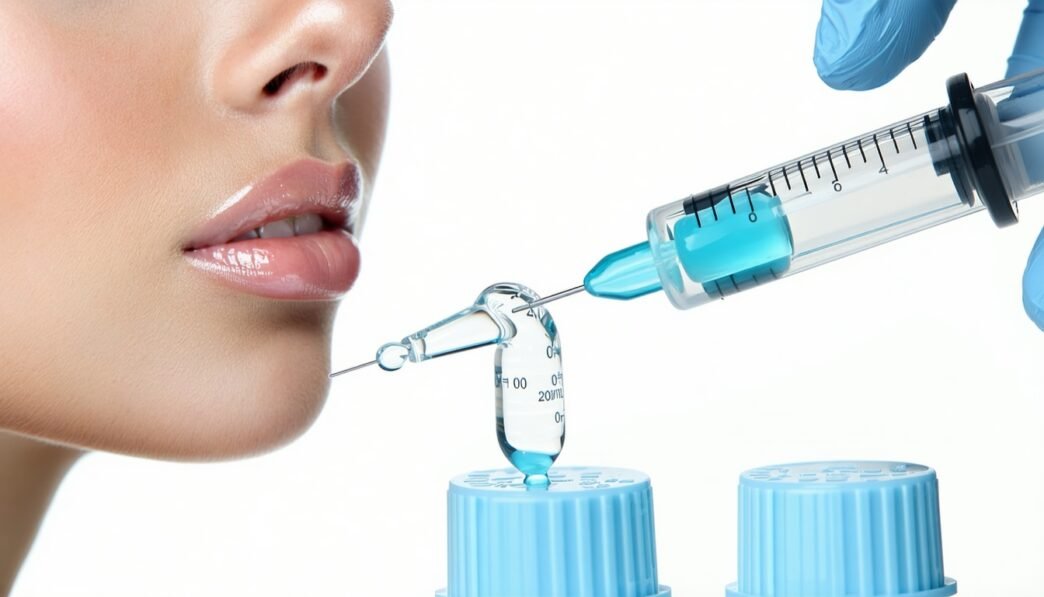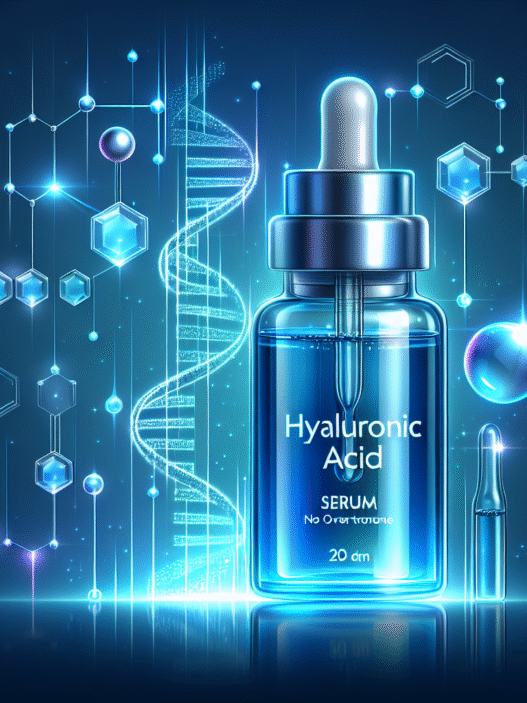Understanding Hyaluronic Acid Injections
Hyaluronic acid injections have gained popularity in various medical and aesthetic practices due to their beneficial properties. They are often referred to as viscosupplementation and are used primarily for joint health, skin rejuvenation, and wrinkle reduction.
Benefits and Mechanism of Action
Hyaluronic acid serves as a natural lubricant and shock absorber in the body, especially in joints. When injected, it helps to restore cushioning and lubrication, alleviating pain and enhancing mobility for patients suffering from conditions like osteoarthritis. Studies indicate that hyaluronic acid injections can significantly improve the quality of life for these patients.
The mechanism of action involves the injection of hyaluronic acid directly into the affected joint, where it absorbs moisture and provides support. This not only reduces pain but also promotes healing in joint tissues. For those interested in improving skin quality, hyaluronic acid can also be injected subcutaneously to promote hydration and elasticity, thus combating signs of aging and enhancing overall skin appearance.
| Benefits of Hyaluronic Acid Injections | Application |
|---|---|
| Pain Reduction | Joint pain relief in osteoarthritis |
| Improved Mobility | Enhanced movement in joints |
| Hydration of Skin | Reduction of wrinkles and fine lines |
| Quality of Life Improvement | Boosted overall well-being |
Duration of Symptom Relief
Most patients experience significant relief from symptoms for approximately 6-12 months following a series of hyaluronic acid injections. This duration can vary depending on individual factors and the severity of the condition being treated. For patients with knee osteoarthritis, the injections might require a series of three or four sessions, typically spaced one week apart, to maximize effectiveness (Mayo Clinic).
| Duration of Relief | Description |
|---|---|
| Short-term | 3 months post-injection |
| Mid-term | 6-12 months post-injection |
| Long-term | Effects may last beyond 12 months in some patients |
Hyaluronic acid injections offer not only immediate relief but can also contribute to long-term improvements, making them a viable option for those seeking anti-aging enhancements as well as joint pain management. For further insights on the benefits of hyaluronic acid, consider exploring our articles on hyaluronic acid benefits and hyaluronic acid for skin.
Administration of Hyaluronic Acid Injections
Hyaluronic acid injections are a popular treatment option in the realm of anti-aging and joint health. Understanding the administration process and planning for injections is crucial for achieving the best possible results.
Treatment Process
The treatment process for hyaluronic acid injections typically involves a series of injections aimed at providing relief from various conditions. Patients often undergo a treatment series of 3-5 injections, with each session spaced approximately one week apart. The exact number of injections is tailored based on the individual’s specific condition and response to treatment.
| Injection Series | Number of Injections | Frequency |
|---|---|---|
| Initial Treatment | 3-5 | Once a week |
During the appointment, a healthcare professional will administer the injection directly into the affected area. For those seeking aesthetic improvements for skin concerns, the injections can help restore volume and hydration, resulting in a more youthful appearance. It’s essential for patients to discuss their goals with their healthcare provider to ensure the treatment aligns with their expectations.
Injection Frequency and Planning
The frequency and planning of hyaluronic acid injections depend significantly on the individual’s condition and desired outcomes. Most patients can expect relief from symptoms for approximately 6 to 12 months after completing a full series of injections, although this duration can vary based on personal factors and the specifics of the joint condition (Integrative Sports & Spine).
For those exploring hyaluronic acid for knee pain, the treatment plan generally involves multiple injections, typically given one week apart. A standard regimen would include 3 to 4 injections to ensure optimal results (Mayo Clinic).
Patients are advised to maintain regular follow-up appointments to assess the effectiveness of the injections and discuss any necessary booster doses. Research indicates that a single quarterly dose can provide consistent pain relief and improved functionality, particularly in older adults with arthritis.
In conclusion, careful planning and understanding of the treatment process are vital for anyone considering hyaluronic acid injections. For further details on the benefits of hyaluronic acid and its applications, readers can explore related topics such as hyaluronic acid for skin and hyaluronic acid for joints.
Safety and Insurance Coverage
Understanding the safety considerations and insurance coverage for hyaluronic acid injections is crucial for individuals contemplating this treatment option.
Risk Factors
While hyaluronic acid injections are generally considered safe, potential risk factors should be acknowledged. Some individuals may experience short-term inflammation or mild side effects at the injection site, such as swelling, redness, or pain. In rare cases, more severe complications may occur. It is important that patients discuss their medical history and any allergies with their healthcare provider prior to receiving injections.
According to data, patients who received quarterly injections of hyaluronic acid for knee osteoarthritis demonstrated significant improvement in knee function and pain over a five-year period, with a reduction in pain scores and functional difficulties. This highlights that, when administered properly, hyaluronic acid injections can be a beneficial treatment option for joint-related issues.
| Potential Side Effects | Severity | Recommendations |
|---|---|---|
| Swelling | Mild | Monitor; apply ice if needed |
| Redness | Mild | Assess for infection if persistent |
| Pain at injection site | Mild | Over-the-counter painrelievers can help |
| Severe allergic reactions | Rare | Seek immediate medical attention |
Insurance Considerations
Insurance coverage for hyaluronic acid injections can vary significantly depending on the provider and the reason for treatment. Many insurance plans, including Medicare, may cover these injections when deemed medically necessary. The staff at clinics like Integrative Sports & Spine typically verify insurance coverage prior to treatment (Integrative Sports & Spine).
In the UK, the National Institute for Health and Care Excellence (NICE) does not currently recommend hyaluronan injections for osteoarthritis, despite some evidence suggesting they may reduce pain over a six-month period. While this could affect NHS prescription policies, individuals can still choose to receive these injections at private clinics, which will typically require out-of-pocket payment.
Patients should consult with their healthcare provider to discuss the possibility of insurance coverage, as well as to understand the financial implications of their treatment options, including whether their insurance plan might cover costs associated with hyaluronic acid benefits.
Sources and Production of Hyaluronic Acid
Hyaluronic acid (HA) is a naturally occurring substance that plays a vital role in maintaining moisture in the body. Understanding its sources and production methods can provide insights into how hyaluronic acid injections are formulated.
Natural Sources
Hyaluronic acid is naturally present in several tissues throughout the body, including skin, cartilage, and connective tissues. It is known for its exceptional ability to bind water, with just a quarter-teaspoon capable of holding about one and a half gallons of water.
Common natural sources of hyaluronic acid include:
| Source | Description |
|---|---|
| Rooster Combs | A traditional source, high in hyaluronic acid content. |
| Bacterial Fermentation | Modern production often involves fermenting types of bacteria to cultivate HA. |
These natural sources are increasingly utilized to produce HA for various applications, including injections and topical formulations.
Production Methods
The production of hyaluronic acid primarily involves two methods: extraction from natural sources and synthetic production.
- Extraction from Natural Sources:
- The traditional method involves harvesting hyaluronic acid from rooster combs. This process, however, has become less common due to ethical considerations and the emergence of more efficient methods.
- Bacterial Fermentation:
- This modern method involves using specific strains of bacteria to ferment sugars, resulting in the production of hyaluronic acid. This approach is more sustainable and allows for large-scale production. It can yield a higher purity of HA, making it suitable for medical and cosmetic applications, including hyaluronic acid for joints and hyaluronic acid for skin injections.
These production techniques ensure that the hyaluronic acid used in injections is both effective and safe. For skincare enthusiasts, exploring the various forms of hyaluronic acid, such as hyaluronic acid serum and hyaluronic acid cream, can help enhance their beauty regimen.
Applications and Benefits of Hyaluronic Acid
Hyaluronic acid has gained popularity in recent years, particularly for its numerous applications and benefits across various health domains, specifically for skin, eye, and joint health, as well as its impressive wound healing properties.
Skin, Eye, and Joint Health
Hyaluronic acid injections are known for significantly enhancing skin hydration and overall appearance. They serve to improve skin firmness and elasticity, reducing the appearance of wrinkles (Cleveland Clinic). A 2023 study showed that oral hyaluronic acid effectively enhanced skin hydration, tone, and epidermal thickness, indicating its extensive benefits for skin health (Medical News Today).
In the realm of joint health, hyaluronic acid injections are often utilized for osteoarthritis treatment. They work by lubricating joint spaces, which can alleviate pain and improve movement in individuals suffering from joint discomfort.
| Application | Benefits |
|---|---|
| Skin Health | Improves skin hydration, firmness, and elasticity |
| Eye Health | Aids in treating dry eyes and enhances moisture |
| Joint Health | Provides lubrication for joints, alleviating pain |
Hyaluronic acid is also used in various eye-care products and procedures. It acts as a natural lubricant and is beneficial for individuals experiencing dryness in the eyes, often providing relief in ophthalmic applications.
Wound Healing Properties
In addition to its benefits for skin, eyes, and joints, hyaluronic acid plays a crucial role in wound healing. It is instrumental in tissue repair and regeneration. A 2022 review concluded that topical hyaluronic acid is effective and well-tolerated for enhancing recovery after facial procedures and may even extend the benefits of Botox injections on skin wrinkles (Medical News Today).
Hyaluronic acid promotes the migration of skin cells to the wound site, aiding in faster recovery. Its moisturizing properties help maintain an optimal environment for healing, reducing scarring and promoting tissue repair.
| Wound Healing Benefit | Description |
|---|---|
| Enhances Cell Migration | Facilitates movement of skin cells to the wound site |
| Reduces Scarring | Maintains moisture for optimal healing |
By harnessing the multifaceted properties of hyaluronic acid, individuals can gain advantages in skin care, joint relief, and wound recovery. Its versatility makes it a valuable component in various treatments and products, including hyaluronic acid serum, hyaluronic acid moisturizer, and hyaluronic acid for joints.
Side Effects and Complications
When considering hyaluronic acid injections, it’s important to understand the potential side effects and complications that can arise during or after treatment.
Common Side Effects
Common side effects associated with hyaluronic acid injections can include:
- Temporary pain or swelling at the injection site
- Bruising
- Redness
- Itching
- General swelling
These symptoms are typically self-limited and may last no longer than seven days. If pain or swelling persists or worsens, it is advisable to consult a healthcare provider for further evaluation and care.
| Side Effect | Duration |
|---|---|
| Pain | Few hours to days |
| Swelling | Few hours to days |
| Bruising | Up to 7 days |
| Itching | Few hours to days |
| Redness | Few hours to days |
Severe Complications and Management
While most side effects are minor, more severe complications can occur, particularly if there are issues with injection techniques. Possible severe complications include:
- Palpable or visible implants
- Over- or undercorrection of treated areas
- Formation of small nodules
- Bluish discoloration under the skin
Management options for these complications may involve local massage, aspiration, incision, drainage, or the use of hyaluronidase to dissolve nodules or correct overcorrection (PubMed Central).
Infections and injection site reactions can also occur, leading to prolonged swelling, pain, redness, and itching. Preventive measures, such as applying firm pressure and ice packs to the area, can help minimize these effects. It is important to monitor for recurrent swelling, which may last for years in some cases.
Understanding these potential side effects and complications can help beauty and skincare enthusiasts make informed decisions when considering hyaluronic acid in their beauty routines. For information on the benefits of hyaluronic acid, see our article on hyaluronic acid benefits.





















